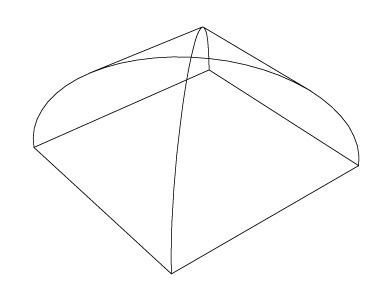 | ||
In architecture, a cloister vault or domical vault is a vault with four concave surfaces (patches of cylinders) meeting at a point above the center of the vault.
Contents
It can be thought of as formed by two barrel vaults that cross at right angles to each other: the open space within the vault is the intersection of the space within the two barrel vaults, and the solid material that surrounds the vault is the union of the solid material surrounding the two barrel vaults. In this way it differs from a groin vault, which is also formed from two barrel vaults but in the opposite way: in a groin vault, the space is the union of the spaces of two barrel vaults, and the solid material is the intersection.
Geometry
Any horizontal cross-section of a cloister vault is a square. This fact may be used to find the volume of the vault using Cavalieri's principle. Finding the volume in this way is often an exercise for first-year calculus students, and was solved long ago by Archimedes in Greece and Zu Chongzhi in China; for more, see Steinmetz solid.
Assuming the intersecting barrel-vaults are semi-cylindrical, the volume of the vault is
